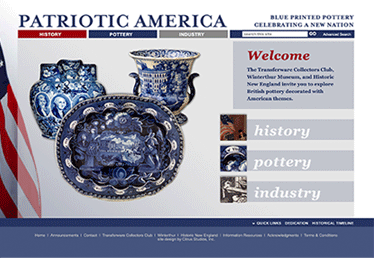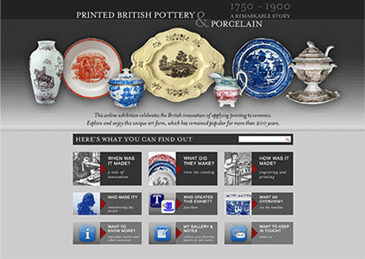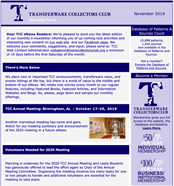|
No limit
June 22-24, 2007 (3 Days)
Fee: $465.00
From the earliest attempts to replicate the much-desired Chinese porcelains to the introduction of turning lathes for earthenware production, the British ceramics industry was in the forefront of the industrial revolution. This 3-day symposium explored some of the remarkable inventions that not only made Wedgwood & Spode household names, but had a powerful effect on society, not only amongst the Potteries’ workers & their families, but in a broader international context. There was a large number of early 19th century models & molds from the Spode Factory exhibited for the inspection of the participants. This is part of the collection of rare material purchased from Spode by Eastfield in the past year. More information and registration form
Eastfield Village website: www.greatamericancraftsmen.org
Lectures and Demonstrations included:
- Beer Shops and Bread Riots, The changes in technology, including the (limited) introduction of steam power & the increasing mechanization of making processes, did not come about without a huge impact on the way of life of the ordinary working potters – men, women & children. This lecture looks at some of the changes in the working & home life of the Georgian & early Victorian potters including child labor, the rise of the unions & food riots. Miranda Goodby, Keeper of ceramics, the Potteries Museum, Stoke on Trent, UK
- From Clay to Glost Oven, This talk covers the processes involved in the many phases of pottery production from the raw state to the final glaze firing until the late 20th century. It includes a section on the process of bat & transfer printing. Robert Copeland, author & former historian of the Spode Factory & noted member of the family that ran Spode for over 175 years
- The Development of Lathe Turning in the Potteries from the 18th century to the mid 19th century, Lecture details the progression of lathe work from the simple turner’s lathe to the complicated rose & crown engine lathes. Includes how these lathes actually worked & what was made on them. Don Carpentier, practical potter & director of Eastfield Village.
- Josiah Wedgwood, Master Potter & Marketing Genius, Nancy Ramage, professor of art history at Ithaca College, author & lecturer on 18th century pottery, especially Wedgwood.
- The Influence of Chinese Export Porcelain on British Ceramics in the 18th to early 19th Century, Traces the use of Chinese designs after the development of porcelain in Britain (1740s), the role of the East India Company in providing Chinese Export porcelain for the upper class, factories who provided matchings and entire tea & dinner services in the Chinese style to an ever increasing public demand, with an emphasis on the prominent role played by Josiah Spode. Connie Rogers, General Editor of the Transferware Collector’s Club Database of Transfer-printed patterns C. 1780-1900, author & lecturer.
- The Rise and Fall of Slip, Slip decoration on utilitarian earthenwares rose to extraordinary heights of inventiveness during the 1770-1840 period, then began a long, slow slide into oblivion. Rickard explores some of the more creative uses in which fluid clay was used to make everyday objects visually exciting. Jonathan Rickard, Author, Collector and Independent scholar specializing in 18th and 19th century Mocha & Diptwares
- Ceramics for Hyde Hall, Cooperstown, NY 1813-1834, Hyde Hall, one of the great country houses in America, was designed by its builder George Clarke & Philip Hooker, Albany's leading neoclassical architect, between 1817 and 1828 on a site overlooking Otsego Lake near Cooperstown. It stayed in his family until purchased by the state in 1963. A number of the original contents remain in the house. Clarke was a meticulous record keeper & many of the bills for his furnishings still survive. These document his choices of British, French & a few Chinese ceramics from retail merchants & auction in Albany, Cooperstown & New York City between 1813 & 1834. Dr Gilbert Vincent, Independent Scholar& former Director of the NY State Historical Society, Cooperstown NY
- The Making of Potter’s Tools by a Potter,. Demonstration of the creation of a blowing bottle for slip work & a three chamber slip pot. Bob Nopper, Practical Potter, Salem, NY, manager Bear Pottery Studio, creating functional & decorative stoneware, sculpture & raku pottery
- The Evolution of Polychrome-Painted Pearlware from the Late 18th to the Early 19th Century. Lecture and Demonstration. Denise Carpentier Practical Potter, specializing in polychrome pearlware reproductions & adaptations.
- Searching through Spode, Detailed visual account of the search through three enormous late 18th century storage buildings at the Spode Factory site for early tools, models & master-molds in 2006 & 2007. Learn about important items were recovered in the process. Don Carpentier
|





 Not a member but want to receive email updates?
Not a member but want to receive email updates?